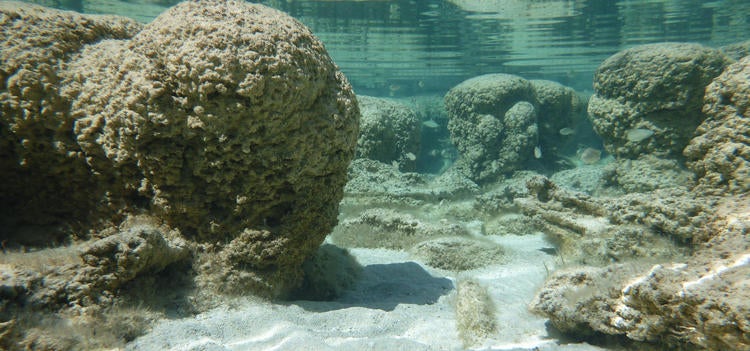
Oxygen in the form of the oxygen molecule (O2), produced by plants and vital for animals, is thankfully abundant in Earth’s atmosphere and oceans. Researchers studying the history of O2 on Earth, however, know that it was relatively scarce for much of our planet’s 4.6 billion-year existence.
So when and where did O2 begin to build up on Earth?
By studying ancient rocks, researchers have determined that sometime between 2.5 and 2.3 billion years ago, Earth underwent what scientists call the “Great Oxidation Event” or “GOE” for short. O2 first accumulated in Earth’s atmosphere at this time and has been present ever since.
Through numerous studies in this field of research, however, evidence has emerged that there were minor amounts of O2 in small areas of Earth’s ancient shallow oceans before the GOE.
A research team including Waterloo Earth Scientist Prof. Brian Kendall has provided compelling evidence for significant ocean oxygenation before the GOE, on a larger scale and to greater depths than previously recognized. Their research was published recently in the academic journal, Nature Geoscience.
In this study, the team targeted a set of 2.5 billion-year-old marine sedimentary rocks from Western Australia known as the Mt. McRae Shale.
“These rocks were perfect for our study because they were shown previously to have been deposited during an anomalous oxygenation episode before the Great Oxidation Event,” says lead author Chadlin Ostrander from Arizona State University.
Shales are sedimentary rocks that were, at some time in Earth’s past, deposited on the sea floor of ancient oceans. In some cases, these shales contain the chemical fingerprints of the ancient oceans they were deposited in.
After first dissolving shale samples and separating elements of interest, the isotopic compositions were measured using a mass spectrometer. The North American team measured the thallium and molybdenum isotope compositions of the Mt. McRae Shale. This was the first time both isotope systems had been measured in the same set of shale samples. As hypothesized, a predictable thallium and molybdenum isotope pattern emerged, indicating that manganese oxide minerals were being buried in the sea floor over large regions of the ancient ocean. For this burial to occur, O2 needed to have been present all the way down to the sea floor 2.5 billion-years-ago.
These findings improve scientists’ understanding of Earth’s ocean oxygenation history. Accumulation of O2 was probably not restricted to small portions of the surface ocean prior to the GOE. More likely, O2 accumulation extended over large regions of the ocean and extended far into the ocean’s depths. In some of these areas, O2 accumulation seems to have even extended all the way down to the sea floor.
“Our discovery forces us to re-think the initial oxygenation of Earth,” states Ostrander. “Many lines of evidence suggest that O2 started to accumulate in Earth’s atmosphere after about 2.5 billion years ago during the GOE. However, it is now apparent that Earth’s initial oxygenation is a story rooted in the ocean. O2 probably accumulated in Earth’s oceans - to significant levels, according to our data - well before doing so in the atmosphere.”
The team of researchers includes: Sune Nielsen (Woods Hole Oceanographic Institution, Massachusetts); Jeremy Owens (Florida State University); as well as Gwyneth Gordon, Stephen Romaniello and Ariel Anbar (Arizona State University). Data collection took over a year and utilized facilities at Woods Hole Oceanographic Institution, Florida State University, and ASU.
Their research was also highlighted in the National Science Foundation's "4 Awesome Discoveries You Probably Didn't Hear of this Week":
In the media:
- Ancient rocks provide clues about Earth’s early history, Florida State University News, February 25 2019